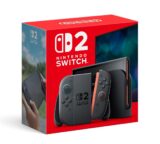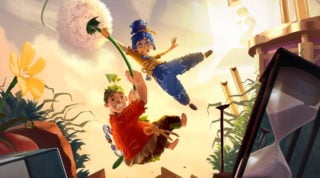Balan Wonderworld review: Sonic’s creators return with a defiantly dated platformer
Yuji Naka’s latest could appeal to a niche audience, but everyone else will find it far too antiquated
- Game director
- Yuji Naka
- Key Credits
- Noriyoshi Fujimoto (Producer), Naoto Ohshima (Character design)

The platform adventure has been a staple of gaming since Super Mario first leapt across pixelized chasms in the mid-80s.
From Clockwork Knight to Super Mario 64, this most inclusive, colourful and family-friendly of genres has introduced generations of players to fresh ideas, bold new interfaces and huge leaps in visual fidelity.
While he’s rarely been in the director’s seat, game creator Yuji Naka has become synonymous with the genre through his leadership of Sonic Team, and programming the original Sonic the Hedgehog games, as well as numerous other 90s Sega classics.
- Further reading: Sonic Origins release date / Sonic Origins level select codes | 2022 games
Now his next game – Balan Wonderworld – is the tantalising prospect of a brand new IP backed by a major publisher, which sees Naka reunite with Sonic the Hedgehog character artist Naoto Ohshima for the fist time since 1998’s Sonic Adventure.
For better or worse, the game the pair have created feels exactly like the sort of projects they worked on 20 years ago, and your enjoyment will depend on how much you’re willing to overlook its dated design.
With its stiff character movement, by-the-numbers levels and unremarkable mechanics, Balan Wonderworld could easily be mistaken for a PS2 game remastered in 4K. For younger players and fans of retro games, there’s a pleasant – if unremarkable – experience here, but other modern games do it far better. The difference in quality between Balan and Crash Bandicoot 4, for example, is stark – and considering the pedigree behind Balan, that’s disappointing.
Balan’ plot is typical Naka nonsense, reminiscent of his Saturn classic Nights Into Dreams. The player chooses between one of two child protagonists: Emma is troubled because she worries her friends are talking about her behind her back, while Leo has become extremely introverted ever since he fell out with a friend years ago.
Both stumble on the Balan Theatre, a magical portal run by a suspiciously Nights-looking character called Balan. He’s there to restore balance to their hearts by sending them to Wonderworld, an alternate realm created by people’s memories.
There are twelve areas in the version of Wonderworld that Emma and Leo visit, and each is based on a different character’s anxieties. One is based on a diver who has an accident with her dolphin and becomes too scared to go back in the water, another is about a chess whizz who loses in a tournament and suffers self-doubt, that sort of thing.
The problem is, Wonderworld is also home to Lance, an evil alternative to Balan who feeds off these anxieties to summon monsters called the Negati. It’s up to either Emma or Leo to visit Wonderworld’s twelve different areas, find the heart pieces at the end of each of them and defeat the ‘personal demons’ at the end to solve each person’s worries and, ultimately, restore balance to Emma and Leo’s hearts. We know, it’s hardly Fight Club.
Balan Wonderworld’s main gimmick is the ability to transform into a series of costumes by finding keys in each stage and using them to open crystals containing them. Each of the game’s 12 worlds has its own selection of costumes, and each time you beat a level, any costumes you have are stored in an inventory to be called upon whenever you like.
“Balan Wonderworld could easily be mistaken for a PS2 game remastered in 4K. For younger players and fans of retro games, there’s a pleasant – if unremarkable – experience here, but other modern games do it far better.”
There are around 80 of these costumes in total, and each gives you a special power. The Web Wrangler costume, for example, turns you into a spider and lets you crawl across any webs you find on walls, whereas the Tackling Bull costume lets you plough through otherwise unbreakable iron blocks to reach hidden areas.
Collecting and switching between costumes is essential for progressing through Balan’s platforming levels, since the player’s abilities are limited to a single action button: every face button and trigger does the exact same thing. This also means that some characters with certain abilities (usually shooting or fighting ones) can’t jump, so finding a good combination is necessary. Players can hold three costumes at once, so part of the game involves choosing which ones to have with you and toggling between them when needed.
Naturally, given that there are so many of them, the quality of each costume varies greatly. A couple of them are downright useless – the likes of Box Fox and Speedy Cheetah turn you into a metal box or give you a huge speed boost “whenever they feel like it”, which isn’t as horribly random as it sounds (they activate and deactivate at set intervals) but is still far from ideal. Thankfully, they generally aren’t needed anyway.

Others are more helpful – the Double Jumper costume is self-explanatory, while the Air Cat, Frost Fairy and Air Unicorn costumes let players walk across the sky for a limited time, letting you reach distant platforms. However, with so many costumes on offer, there is some inevitable repetition. Many of them don’t feel unique enough to justify their inclusion and ultimately, none come anywhere near Super Mario power-ups in terms of feel or fun.
Discovering new costumes also encourages revisiting older levels, to acquire the hidden gold trophies required to unlock new environments. These are hidden on each stage, but some of them can’t be reached right away – you need to come back later with certain costumes and use their abilities to get them.
It’s obviously not the most original concept, but it does offer some replay value. It has its drawbacks: if you die while a costume is equipped, you’ll lose it, and if you don’t have another one in your inventory you’ll have to go back to the world it came from and get another.
“We don’t expect to see Balan Wonderworld threatening to appear in anyone’s top 10 lists for the year, but as a package it’s mostly inoffensive and younger players or fans of retro games might even enjoy it a lot.”
This can be frustrating, especially given that some of the better costumes like the Double Jumper are tricky to acquire, though when you get one you can at least find a checkpoint and use it to leave the stage with your costume intact instead of having to complete the whole level again.
As it stands, Balan Wonderworld feels outdated, like a typical PS2-era platformer. Although the character design shares most in common with Nights, the general feel is more like the sort of game you’d get at the turn of the millennium, and whether that’s a good or bad thing depends on your tolerance for antiquated design.
The game’s producer Noriyoshi Fujimoto stated in a recent blog post that a day one patch would address some of the complaints aimed at the recent demo, such as improved movement controls, camera movement and difficulty rebalancing. However, any tweaks don’t seem to have made a big difference, so those put off by the demo’s defiantly dated feel likely won’t be won over by the final game.
However, this isn’t the worst game of all time, as some social media accounts might have you believe: we don’t expect to see Balan Wonderworld threatening to appear in anyone’s top 10 lists for the year, but as a package, it’s mostly inoffensive and younger players or fans of retro games might even enjoy it a lot. We played through the entire game in a day, and as fans of the genre, it was… fine.

Back in the PS2 era, Balan wouldn’t feel out of place among the likes of Billy Hatcher and the Giant Egg, but by today’s standards, it’s simply average. It isn’t abysmal, nor is it amazing. Some elements are even pretty great, such as the wonderful music and undisputedly charming cutscenes, which are created with the CGI mastery we’ve come to expect from Square Enix.
But It’s impossible to ignore that the genre has progressed in leaps and bounds in the last two decades, and it’s difficult to recommend a game that feels like it’s from 20 years ago for a premium price (Balan is $60), to anyone other than the most ardent devotees of Naka’s work.
If you’re curious about it, you’re better waiting for the inevitable price crash or, if you’re an Xbox owner, crossing your fingers for a Game Pass appearance, at which point it would at least be worth a try.
For now, Balan is a wholly unremarkable, by-the-numbers example of a bygone era of platforming. If you go into it expecting PS2-era sensibilities, you may get something out of it, but if you’re hoping for it to match up to the likes of Crash Bandicoot 4 or other modern platformers, the difference in quality is stark.
For better or worse, Balan Wonderworld feels like an HD take on a PS2-era platformer. As long as you manage your expectations accordingly and accept the limitations that come with this, there's some enjoyment to be had with it. By modern standards, however, the game falls far short of expectations.
- Its wide range of costumes create a backtracking mechanic that adds replay value
- Generally charming to look at and listen to
- Feels like a fairly standard platformer from the turn of the millennium
- Some severe performance issues at times, even on next-gen systems
- A decent number of the 80+ costumes are either rubbish or have duplicate abilities
























